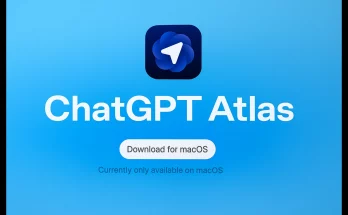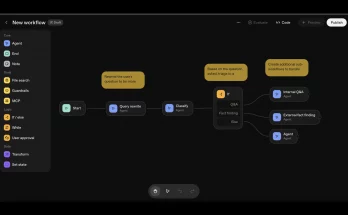Artificial intelligence is rapidly evolving, but the inner workings of these systems remain largely opaque. A groundbreaking new tool developed by researchers at AI company Anthropic is offering unprecedented insights into how large language models (LLMs) “think.” This article delves into this innovative technology and its potential to unlock the secrets of AI.
Peering Inside the AI Brain
Traditionally, AI models have been viewed as “black boxes,” their decision-making processes hidden within layers of complex algorithms. Unlike conventional computer programs that are coded by hand, AI neural networks are “grown,” making it difficult to understand the mechanisms behind their capabilities. However, the team at Anthropic is pioneering a new field called “mechanistic interpretability.”
The Quest for AI Transparency
Mechanistic interpretability aims to develop tools that can decipher the complex numbers within AI neural networks and translate them into understandable explanations. Chris Olah, an Anthropic cofounder, emphasizes the importance of identifying the algorithms embedded within these models to ensure they adhere to human rules and guidelines.
Unveiling the “Thinking” Process of AI
The Anthropic team’s research has revealed surprising insights into how LLMs operate. In one experiment, they prompted their AI model, Claude, to complete a poem. The model responded with the lines:
“He saw a carrot and had to grab it,”
“His hunger was like a starving rabbit,”
Instead of simply predicting the next word, the researchers discovered that Claude was planning ahead, considering rhyming words like “rabbit” even before reaching the end of the first line. This suggests that AI models are capable of more than just simple autocomplete functions.
Challenging Conventional Wisdom
This discovery challenges the notion that AI models are merely sophisticated autocomplete machines. It raises questions about the extent of their planning capabilities and the complexities hidden within their synthetic brains. The new tool developed by Anthropic allows researchers to examine which neurons, features, and circuits are active at each step of the AI’s thought process.
A “Microscope” for AI: Tracing Neural Pathways
Anthropic’s new tool functions like a “microscope” for AI, allowing researchers to trace how groups of features connect within a neural network to form “circuits” that carry out different tasks. This level of transparency is unprecedented compared to biological brain scans, which offer only a blurred picture of neuronal activity.
- Identifying Rhyming Features: By suppressing a feature that identifies rhyming words, the researchers were able to alter Claude’s output, demonstrating the tool’s precision.
- Holistic Computation: Olah hopes to expand the tool’s capabilities to encompass the entire scope of an AI model’s computation, enabling a comprehensive understanding of its algorithms.
Universal Language: AI’s Non-Linguistic “Thought” Space
The research also supports the theory that large language models “think” in a non-linguistic statistical space shared across different languages. When Claude was asked for the “opposite of small” in English, French, and Chinese, the tool identified features corresponding to smallness, largeness, and oppositeness that activated regardless of the language. This suggests that AI models can abstract ideas beyond specific languages.
Implications for Low-Resource Languages
This finding has significant implications for improving AI performance in low-resource languages. If AI models can map linguistic data onto a non-linguistic conceptual space, they may not require vast quantities of language-specific data to function effectively and safely.
SEO Keywords: AI interpretability, neural networks, large language models, mechanistic interpretability, Anthropic, AI safety, AI transparency, low-resource languages, AI algorithms, Claude AI model.
The Future of AI Interpretability
Despite these advancements, AI interpretability is still in its early stages. Anthropic acknowledges that their method only captures a fraction of the total computation within Claude’s neural network. Significant challenges remain in scaling these techniques to more complex models and prompts. However, the potential rewards are immense.
Toward Nuanced Understanding of AI
Olah believes that interpretability can bridge the gap between polarized views on AI, fostering a more nuanced understanding of how these models work. By providing a way to discuss AI mechanisms, interpretability can help address critical questions, such as:
- Are these models safe?
- Can we trust them in high-stakes situations?
- When are they lying?
The development of tools like Anthropic’s “microscope” represents a significant step forward in understanding the inner workings of AI. By unlocking the secrets of neural networks, researchers can pave the way for safer, more reliable, and more transparent AI systems. As AI continues to evolve, the ability to interpret its mechanisms will be crucial for ensuring its responsible development and deployment.



